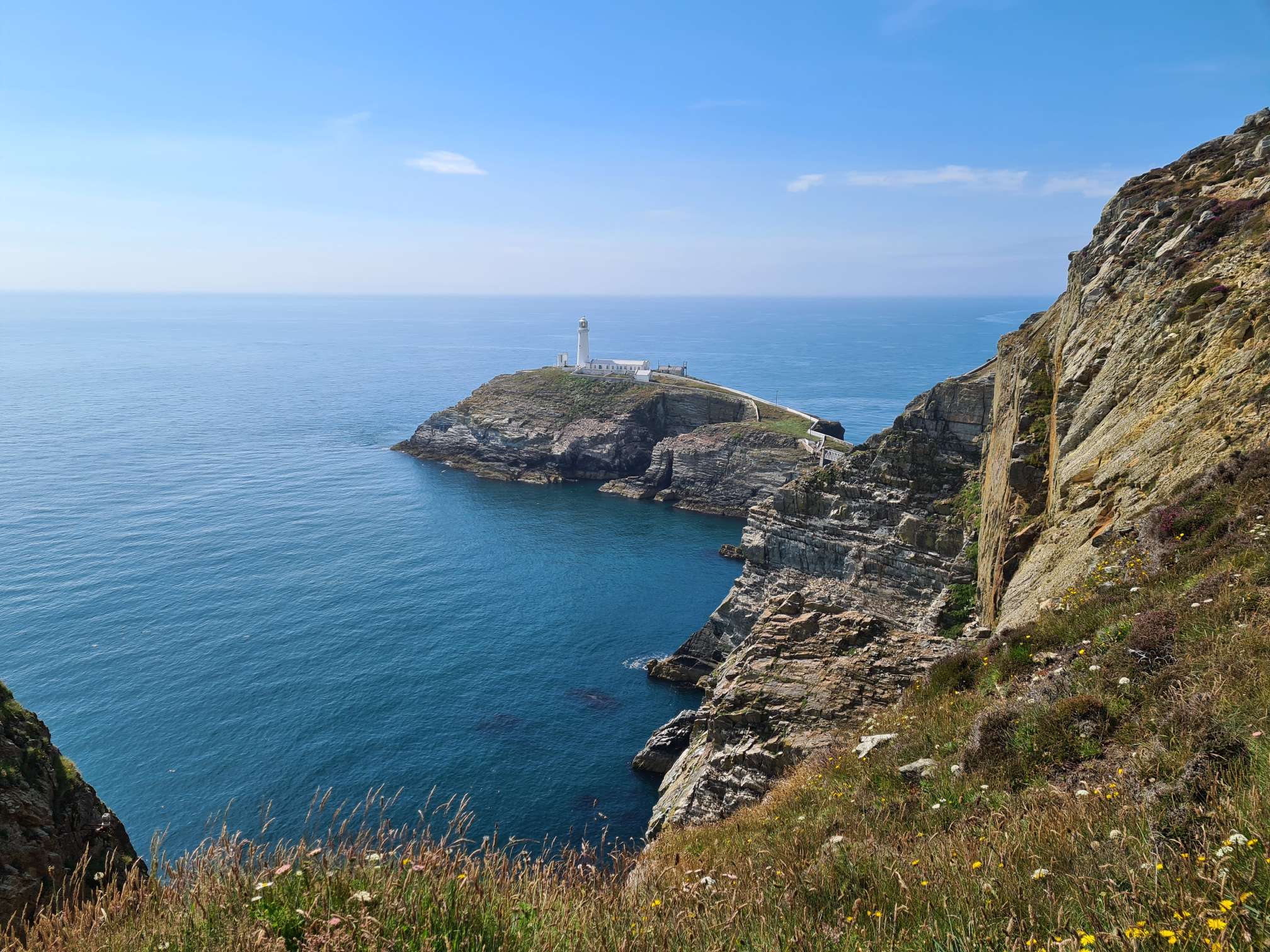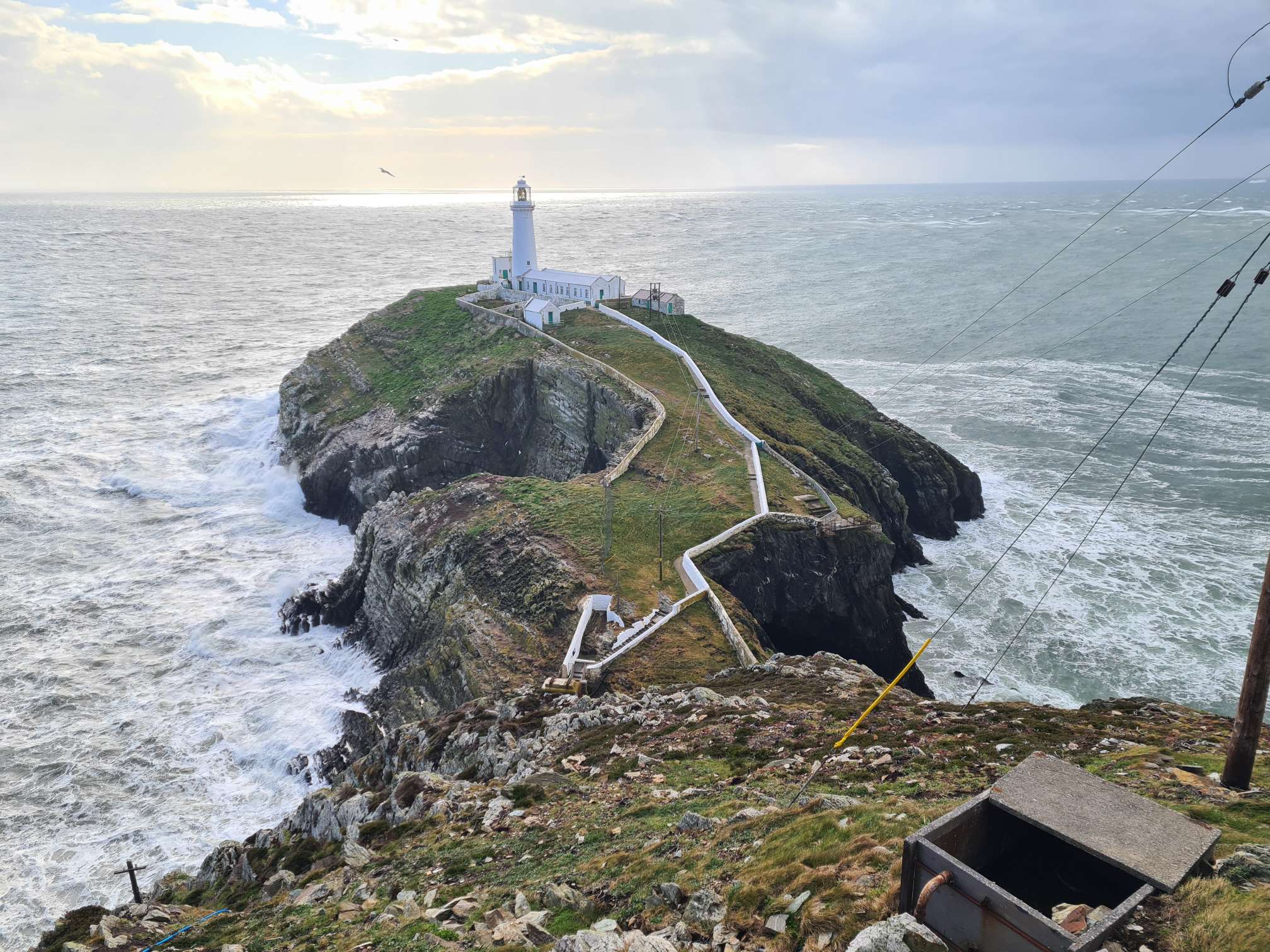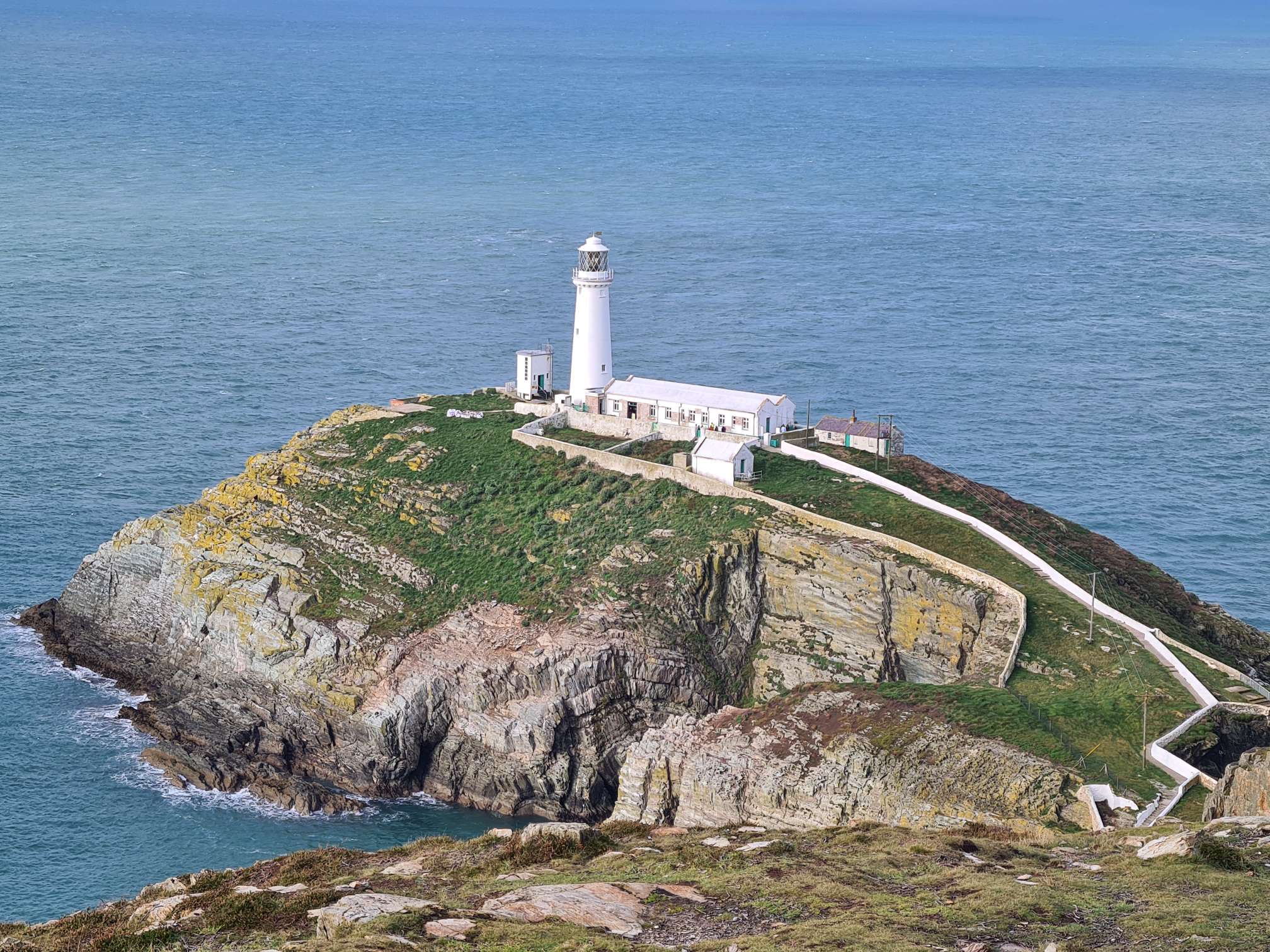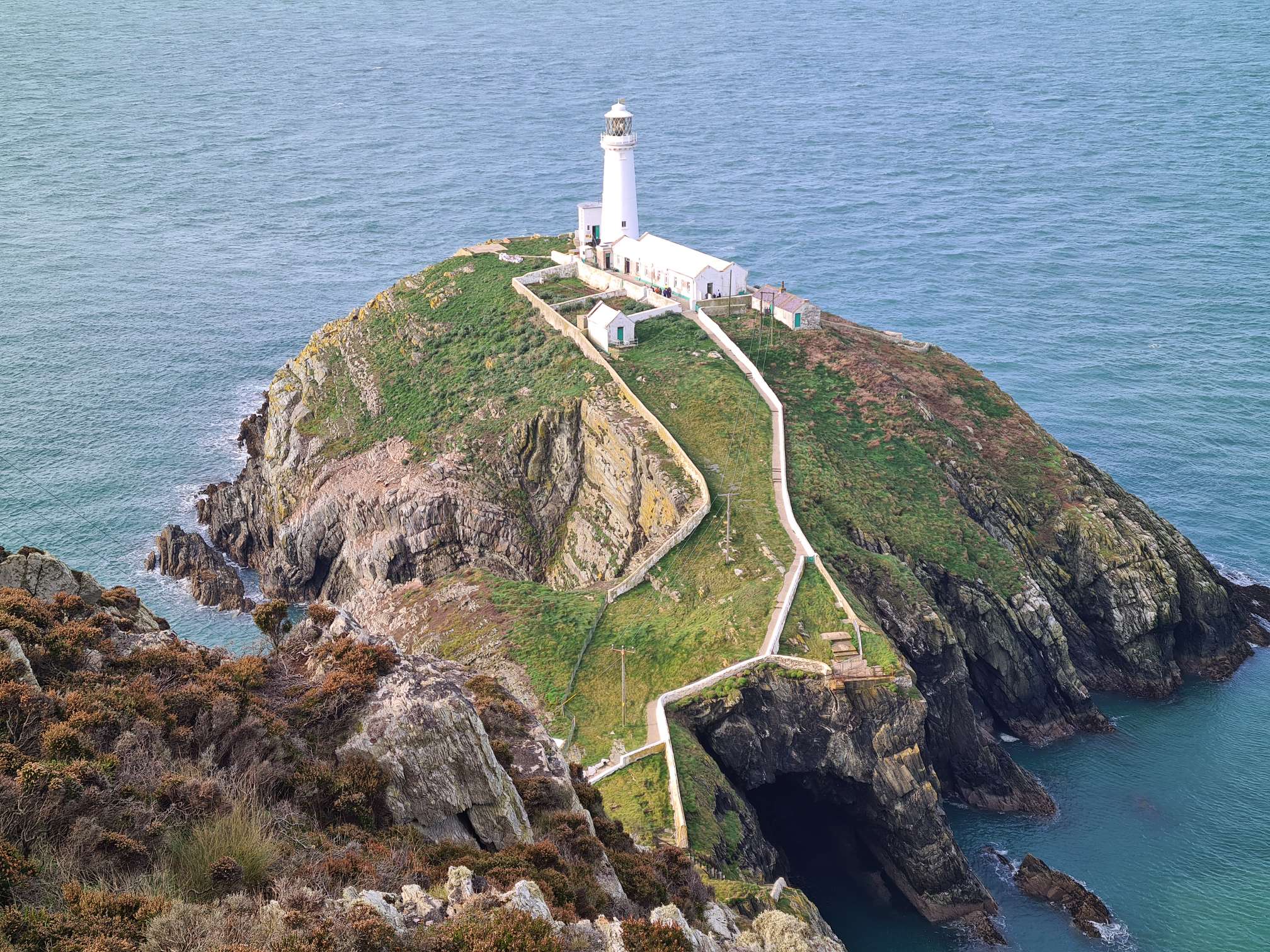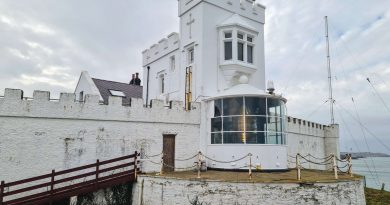South Stack Lighthouse
Perched dramatically on the edge of a rugged cliff on the northwest coast of Anglesey, Wales, South Stack Lighthouse stands as a testament to both maritime engineering and natural beauty. With its striking white tower set against the backdrop of the Irish Sea, South Stack Lighthouse has become an iconic symbol of the region, drawing visitors from far and wide to witness its charm and learn about its rich maritime history.
History and Construction:
South Stack Lighthouse was first lit in 1809, its construction spearheaded by Thomas Smith and his son-in-law, Robert Stevenson. The lighthouse was a response to the increasing number of shipwrecks in the treacherous waters surrounding Holyhead, a major port in the 19th century. The design of the lighthouse is a masterpiece of engineering, considering the challenging conditions and the need for a structure that could withstand the elements.
The tower itself stands at an impressive 28 meters (91 feet) high, and its light is visible for a distance of approximately 28 miles (45 kilometers). The construction of the lighthouse involved the use of local Anglesey limestone, giving it a distinct appearance that complements the rugged beauty of the surrounding landscape.
Function and Technology:
South Stack Lighthouse was originally equipped with an oil lamp and reflectors, later upgraded to a Fresnel lens in 1843. Over the years, the lighthouse has undergone numerous technological advancements, embracing electricity in 1938 and eventually becoming fully automated in 1984. The modern LED lantern now guides ships safely through these perilous waters.
Each Lighthouse has its own unique pattern, enabling sailors to identify the lighthouse and navigate the intricate coastline. The lighthouse’s role in maritime safety has been crucial, especially during times when navigation heavily depended on visual aids rather than sophisticated technology.
Wildlife and Natural Beauty:
Beyond its maritime significance, South Stack Lighthouse is set within an Area of Outstanding Natural Beauty. The cliffs surrounding the lighthouse are home to a rich variety of seabirds, including puffins, razorbills, and guillemots. The South Stack Cliffs RSPB Reserve, established to protect these seabird colonies, offers breathtaking views of the lighthouse and the rugged coastline.
Access and Visitor Experience:
Visitors can experience the magic of South Stack Lighthouse by taking a scenic walk along the South Stack Cliffs. A suspension bridge connects the mainland to the small island where the lighthouse stands, providing an exhilarating journey over the deep blue waters below. The bridge itself is an attraction, adding an element of adventure to the overall experience.
The South Stack Visitor Centre provides additional insights into the history of the lighthouse, the flora and fauna of the area, and the ongoing efforts to preserve this natural and cultural gem.
Conclusion:
South Stack Lighthouse stands as a beacon of maritime history and natural beauty, showcasing the harmonious coexistence of human engineering and the rugged Welsh landscape. Its enduring presence and continued importance in maritime navigation make it a must-visit destination for those seeking to explore the rich tapestry of Wales’ coastal heritage. Whether for its historical significance, technological marvels, or the sheer beauty of its surroundings, South Stack Lighthouse continues to capture the hearts and imaginations of all who encounter its enduring light.
RSPB South Stack, S Stack Rd, Holyhead, LL65 1YH
